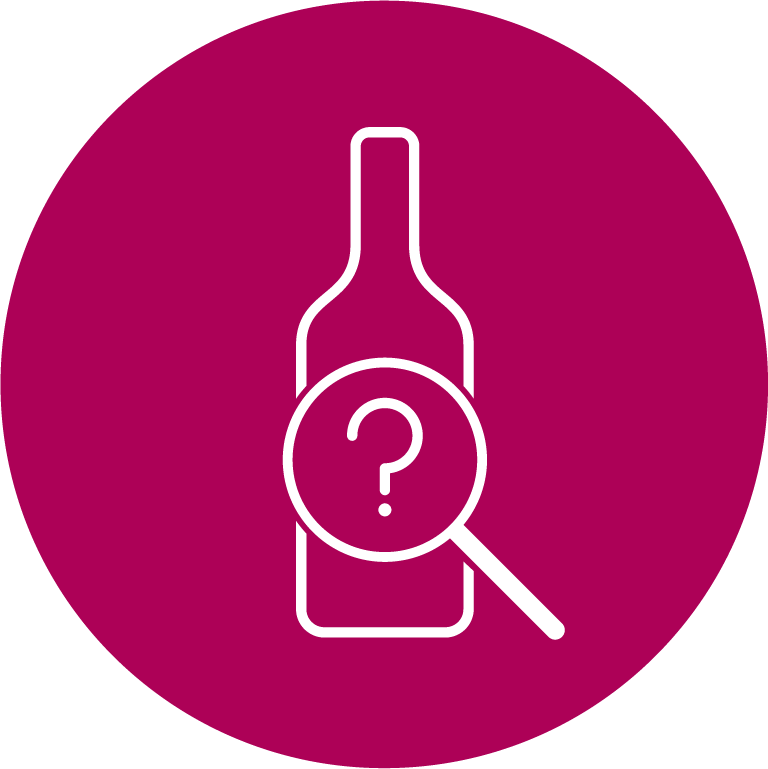Chatting to a friend at the weekend, she brought up the subject of Orange wine – it was a term she wasn’t familiar with when she heard about it, so I thought it would make a good subject for one of my ‘In a Nutshell’ blogs.
First things first, Orange wine is NOT made from oranges!
It is a common mistake to make, given you can make wine out of fruits other than grapes (i.e. Elderberry or blackberry wines), but these are commonly known as “Fruit wines”. Orange wine is not a fruit wine, it is made from grapes, and it takes its name from the colour – yes you guessed it, orange wines are orange!
How are Orange wines made?
It is all to do with skin contact, by which I mean, the amount of time the juice from the crushed grapes remain in contact with the skins and seeds.
Orange wines are made from white grapes, but whereas the production of a white wine usually involves pressing the grapes off their skins very early in the production process (and before fermentation), with orange winemaking, the process is similar to that used for red wines.
Grapes are crushed but not pressed, they then are left in a fermentation vessel (usually something inert like a concrete tank or a Qvevri) for a period of days, sometimes months or even longer, where the juice, skins, pulp and seeds macerate together before fermentation takes place (usually naturally i.e. without added yeasts). This contact with the skins and seeds extracts colour, tannins and phenolics. The must is then pressed off skins after the primary fermentation.
Orange wines are often associated with the natural wine movement because of the non-interventionist approach to the winemaking such as lack of additives used during production. While orange wines (also known as Amber wine) are quite ‘on trend’ at the moment, this is not a new thing – the first wines made many centuries ago would have used this process due to the lack of modern winemaking equipment available at the time!
Note – the depth of colour will vary depending on grape variety used, length of time on skins prior/during fermentation and the fermentation temperature, among other things.
What do Orange wines taste like?
I’ve heard people call Orange wines the “new Rosé” but I think this is misleading, the only similarity to me is the skin contact element of the production process, generally speaking I’d describe Orange wines as being savoury, textural, tannic in nature and above all serious!
Expect a dry wine with less overt fresh fruit and more dried fruit and savoury notes evident. Because of the low-intervention winemaking, these wines are often slightly oxidative, giving aromas reminiscent of bruised apples alongside dried apricot, nutty, honeyed and slightly salty notes.
These are very much food wines, the complex tannic style well suited to gastronomy. I certainly wouldn’t crack open a bottle and sit sipping it in the sunshine – they just aren’t really that kind of a wine, at least for my palate!
Wines to look for
Orange wines are still relatively scarce on the High Street but this is changing – you are best looking to Georgia, North-Eastern Italy (Friuli-Venezia Giulia region) and Slovenia who have been making these wines for a long time. But increasingly winemakers are popping up all over the globe, experimenting with this style. There are numerous Portuguese and Spanish orange wines being made and Australian producers are increasingly experimenting too.
Unfortunately, Orange wines are rarely cheap, although I do know ASDA had a very low-priced (i.e. under £8) Romanian Orange wine available recently. Waitrose also have an English example from Denbies called Litmus made with the Bacchus grape for around £15.
I have put together a few examples ranging from £12.75 to £23.99 below:
Tbilvino Qvevris Rkatsiteli from Georgia. Made using the indigenous Rkatsiteli and fermented in a Qvevri. (£12.75)
Cullen ‘Amber’ – from Margaret River’s Wilyabrup sub-region in Western Australia, this lovely example is 100% Sauvignon Blanc. (£23.99)
Another Aussie producer making Orange wines, is Brash Higgins, he makes a wine called ZBO Zibbibo Amphora. FYI Zibbibo is another name for Muscat of Alexandria, and this wine is fermented using wild yeasts in beeswax lined clay Amphora. (£20.99)
Domaine Gauby in France also use Muscat to produce their `Jasse` Blanc IGP Côtes Catalanes. (£19.25)
Both Brash Higgins and Domaine Gauby are more aromatic and fruitier in style by virtue of the grapes used.

Top tip – If you see the term Ramato, this is stylistically quite similar to an Orange wine. Meaning “coppery” in Italian, this describe wines made using skin contact from the Friuli region of Italy using the Pinot Grigio grape. The result: characterful wines with a pinkish orange hue.
If you wanted to try a Ramato wine – I can recommend Specogna Pinot Grigio Ramato (£16.49), I really like this wine, it is much more interesting than a bog-standard Italian Pinot Grigio!
So there you have it in a nutshell – Orange wines. If you are interested in trying any of the above or after more information, do let me know.
